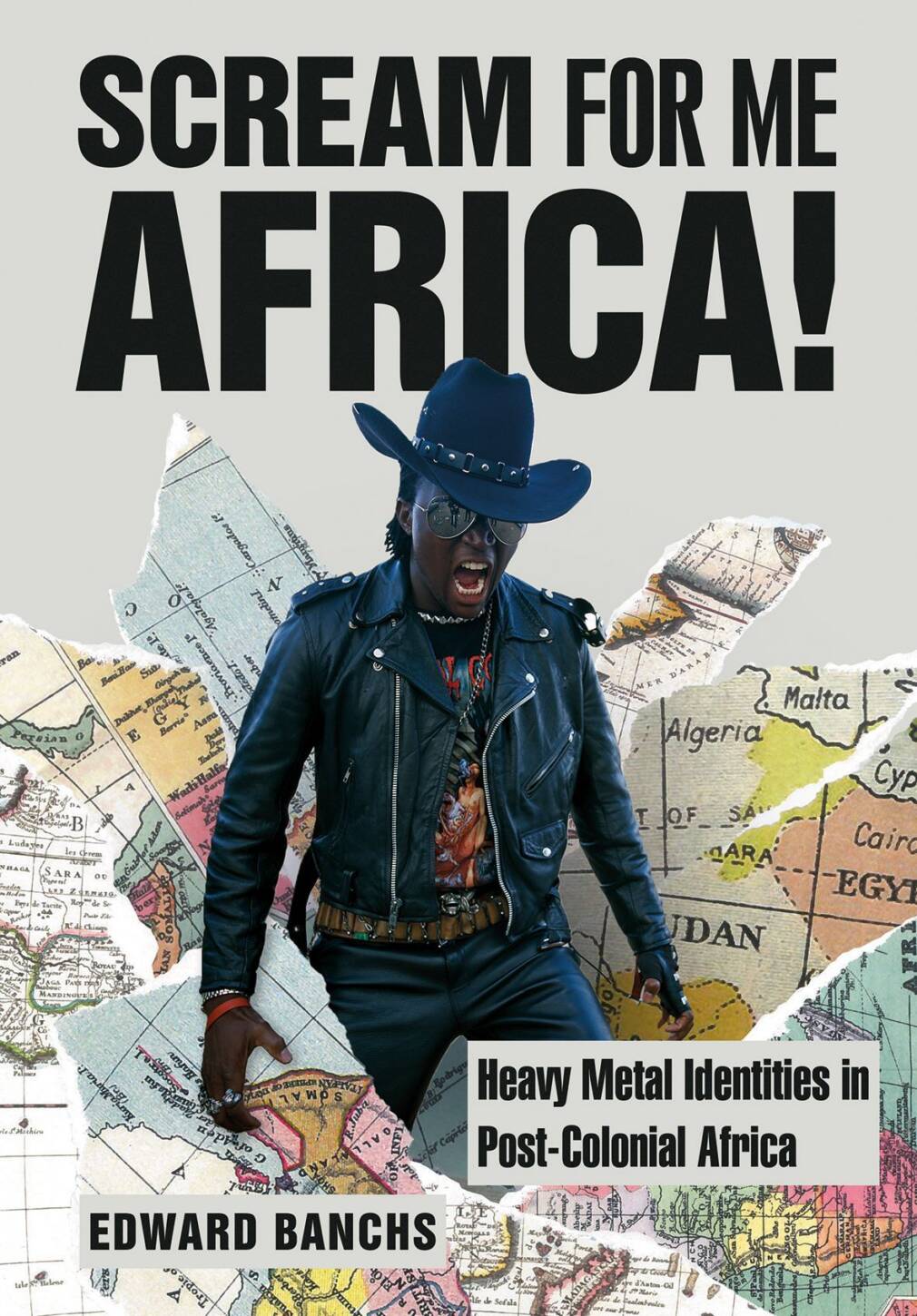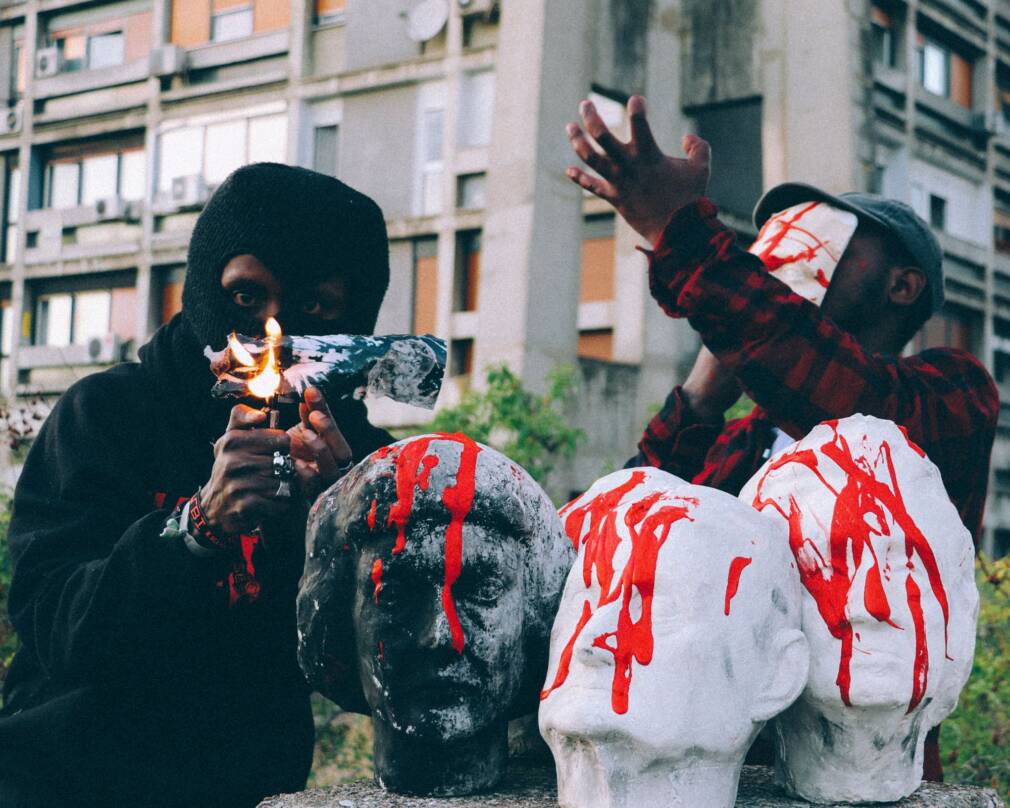As of last year, Nairobi’s hot underbelly has propelled into orbit one of its most infamous offspring yet: Duma. The electronic black metal duo, who recently set Sonic Protest 2022’s stage alight, are currently in the midst of their aptly named “Mogul Tour”. Violent, deranged, and impulsive the Nyege Nyege Tapes duo are the ultra-concentrated chemical discharge from the current Kenyan metal scene. A profiled environment, whose emergence oscillated from colonial remains, global power outages and fire from the belly, carried by just a handful of activists.
Let’s recall the history: Kenya freed itself from the tutelage of the British administration in 1963. The country, driven by its locomotive-city Nairobi, quickly abandoned the hopes of the radical independentists and converted to unbridled capitalism, an ideology directly inherited from the British colonists consisting of unequal distribution of land, great poverty, cronyism, incentives for foreign investments, while the British capital wealth remained well preserved… The Kenyan elite adopted the market economy to the detriment of the rebel ideals. Skyscrapers quickly sprang up in the capital city where business starts early in the morning. Despite its authoritarian one-party regime, established by pro-independence activist Jomo Kenyatta, Kenya would enjoy a certain social stability. In Nairobi, you would see many foreign artists investing the capital.
Thus, as early as the 1960s, radio stations and phonographs fell for the sound of South African jazz and famous Congolese guitarists. From then on, the six-stringed instrument took center stage in the capital. A liberal, nocturnal, multilingual and party-infused city, Nairobi eagerly adopted and digested every musical avant-garde – be they Western or African. The power of radio has long been responsible for broadcasting the best of the world’s sounds throughout the country. A strong penchant for technological progress combined with the economic boom would provide the city with numerous recording studios, as well as music venues well equipped for live music.
These Nairobi-based facilities attracted the singers of benga music – a very popular genre in Kenya, which transposed to the guitar the way traditional nyatiti harp was plucked, until its peak in the early 1980s.
During the seventies, the capital city also welcomed many Zambian bands from the huge zamrock scene. Formed by fans of the Rolling Stones, Deep Purple and Black Sabbath, this precious Zambian scene was the pioneer of hard rock and heavy metal in East Africa, and its members regularly visited Nairobi and its recording studios. That is when the first metal seeds would be planted in Kenya: “The city has long been an international hub for many music scenes”,explains producer Sam Karugu, of the band Duma, who recently set the stage on fire at Sonic Protest 2022’s edition, and are currently on their aptly named “Mogul Tour”. “For a rock band, the best way to record an album was to go to Nairobi. This is why so many projects were realized here in our city.”
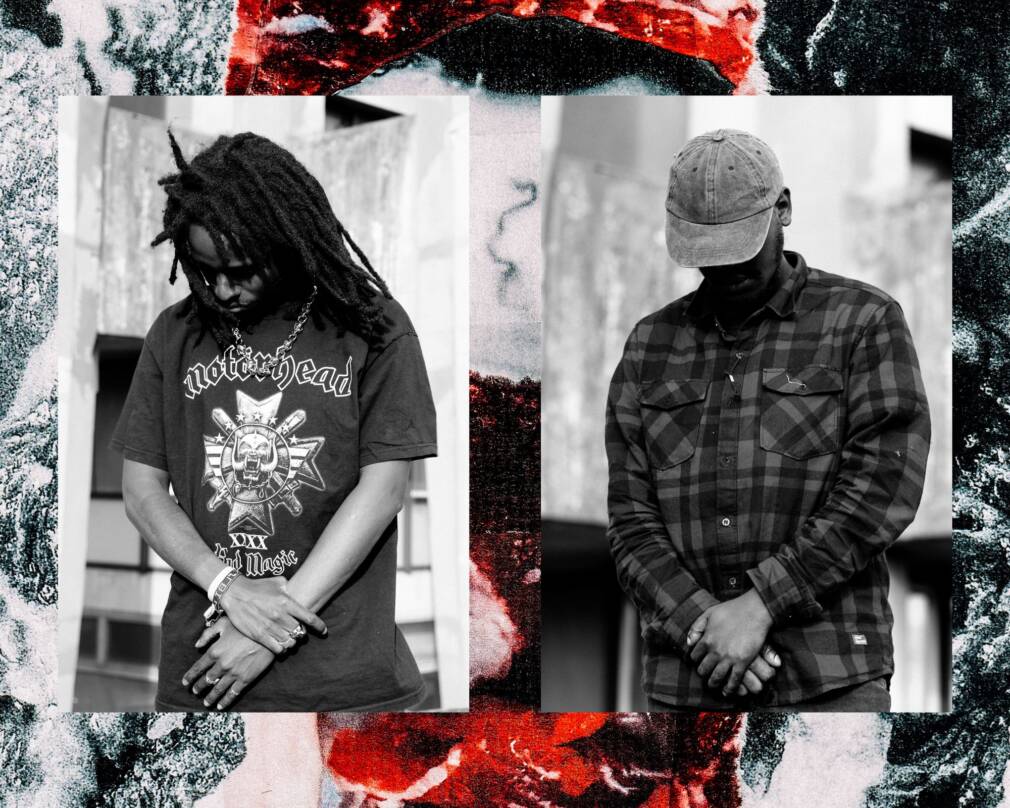
Nirvana in Kenya
A North-American author and metalhead, Edward Banchs recently published his second book*, Scream for Me, Africa! Heavy Metal Identities in Post-Colonial Africa, dedicated to the East African metal scene: “Compared to what happened in the West, the Kenyan metal scene is still quite new. You have to go back to the ‘90s, when you would hear heavy metal and rock music on commercial radio stations, as well as in the soundtracks of television-broadcast films. The success of Seattle grunge band Nirvana, as well as Los-Angeles-based Guns N’ Roses, had a strong impact on the youth of Nairobi.” But the authoritarian regime of Kenyatta’s successor, Daniel arap Moi, put media under scrutiny and as a result controlled all radio music broadcasting, carefully restricting the playlists: “If people would often listen to AC/DC, the audience did not have easy access to the rest of the world’s underground punk or hardcore either. It was through expatriate students traveling to the West, as well as wealthy university alumni who had the time and means to understand the phenomenon, eventually establishing a true local metal culture.”
In the capital’s high schools and universities, Kenyan kids immediately embraced the genre and its counter-cultural possibilities: “All the people I started metal bands with were basically school friends,” recalls Martin Khanja aka Lord Spike Heart, the other half of the band Duma. Violent, deranged, impulsive, the duo signed to Nyege Nyege Tapes are the ultra-concentrated chemical discharge of the current Kenyan metal scene. “Being a metalhead in Kenya,” he says, “was so odd and rare that when you met someone like you, you would become friends with them immediately. Everyone knew each other, and everyone played in each other’s projects.” But this effervescence remained almost a clandestine movement: “Until the democratic changeover in the early 2000s, the metal scene was forced to hide under the radar of Daniel arap Moi’s authoritarian regime,” explains Edward Banchs. “Bands and concert promoters alike had to play it low-key.”
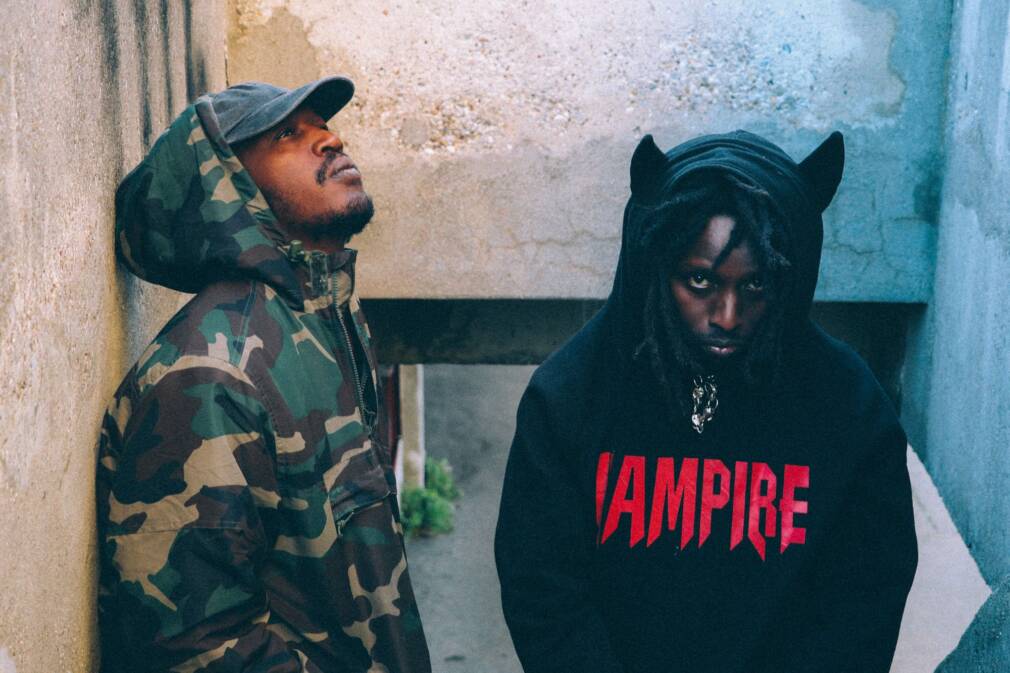
“Things started to get serious in the early 2000s,” adds Lord Spike Heart. As we entered the new millennium, the number of small bands in the country exploded. While the internet era allowed for big international discoveries, the patient work of national radio stations helped to cement the cohesiveness of the local scene: “We grew up listening to XFM. Man, that station played rock’n’roll all day,” Martin recalls. “And they had this weekly show, called Metal to Midnight. So every Thursday, you had a date with the metal underground scene from 10 PM to midnight, which was a crazy thing.” While some clubs started to program rock and metal DJ sets in town, the advent of skate culture in Kenya eventually unified the scene: “Skateboarding put hardcore, punk and metal aesthetics together in the same bubble. Internet, clubs, radio and skateboarding: these are the four pillars that made the metal scene emerge in Kenya! A scene that today involves about 10,000 fans, I would say.”
“Black, hardcore or death, all the metal sub-scenes coexist and merge in Kenya, where there is no separation between the genres,” adds Sam Karugu of the Duma duo. “The scene is a very diffuse one and spreads all over the country. Even in cities where our band has not been yet, I’m sure you’ll find kids who formed bands. Despite this fast-growing movement, we are aware that we represent only an ultra-minority musical trend, in a very conservative and closed country,” adds Lord Spike Heart. “We rockers and metalheads are still underrepresented in a mass culture where consensus rules. And I think that at the end of the day, it was this very outcasting that energized the scene. We formed bands to write and play music that didn’t exist in our country.”
In a 2015 study entitled “Headbanging in Nairobi: The emergence of the Kenyan metal scene and its transformation of the metal code”, researcher Ekkehard Coenen analyzes the emergence of the local scene as a successful collusion between travelers, student networks and the influence of the internet: “In 2005, the local scene gave birth to its first real band from the local community, Last Year’s Tragedy. A cover band at the beginning, they started to compose their own songs three years later, with references to artists such as Killswitch Engage, Bring Me the Horizon or As I Lay Dying. The full spectrum of metal is well represented in the country, as death metal and metalcore are championed by bands like Last Year’s Tragedy, In Oath or Aphasia, while Seismic plays a more classic metal sound and ParkingLotGrass favor hard rock.”
“Alternative” current
The Kenyan metal scene is not without its distinct local identity: “The bands and the fan base are growing, while the level of production, organization and distribution is also improving,” says Ekkehard Coenen. “However, the metal scene remains structurally dependent on Kenyan urban infrastructure.” Highly capital-intensive, the practice of playing metal itself relies on amplified instruments: “The scene is dependent on a stable power supply,” adds the researcher. “The urban-rural divide is obvious, with Kenyan metalheads living mainly in large urban centers,” says Ekkehard.
Many of these metalheads originate from the Kenyan middle class: “While some Nairobi-based musicians are born of the country’s most influential and prosperous families, most of the activists in the scene descend from the capital’s working middle class,” comments writer Edward Banchs. “In fact, they face problems with infrastructure. I’ve seen rehearsal spaces where the power goes out when all the musicians are plugged in at the same time… Also, finding a regular rehearsal space can be quite expensive and sometimes the bands work on their songs in the middle of a gig because they lack regular practice. Such is the Kenyan scene, where the expression ‘do it yourself’ takes new meaning.”
Another singularity of the Kenyan metal scene – on a more symbolic note this time – is its relationship with the concept of “sacrilege”. Since its inception, metal music has been entirely focused on the annihilation of Christian morality. However, “a large part of the Kenyan population have converted to Christianity,” explains the researcher. “Despite this, you find many black metal fans in the local scene. Because of these two apparent contradictions, Kenyan metal songs do not feature your usual satanic and occult lyrics, that are typical of the genre.” In fact, the phenomenon is quite the opposite: “You regularly hear Christian-oriented lyrics,” adds the German researcher, who has identified several signs of religious allegiance on the part of some Kenyan bands: “I am thinking about, amongst others, the lyrics of ‘Your Grace’ by the band Seismic, a song they released in 2010. As well as the statements of Christopher Lilako, guitarist of the band In Oath, who explained in an interview with Zuqka magazine, that ‘our songs have positive messages about life, as well as some Christian values. We feel strongly about it.’”
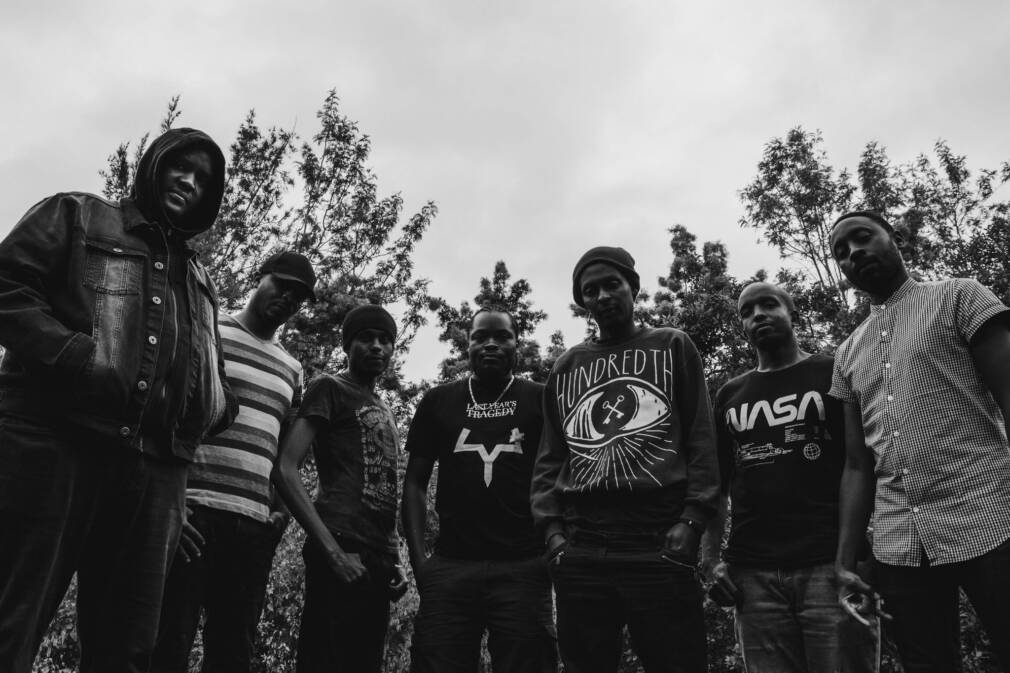
Without going as far as converting to the “Holy UnBlack Metal” – an improbable pro-Christian mutation of black metal –, the Kenyan scene naturally assumes their anchorage in religious values: “The harsh criticism of christianism, constitutive of metal music in general, completely escapes the local scene,” comments Ekkehard Coenen. A metalcore band like Void of Belonging used to welcome people on their homepage with the following message: “We thank God for the amazing gifts he has given us.” At the same time, the band’s frontman would wear a Slayer t-shirt on stage.
“This paradox is not so easy to live with for young Kenyan metalheads”, says author Edward Banchs. “In 2013, while researching for my first book, a cargo ship containing a load of Halloween masks docked at the port of Mombasa, Kenya’s second largest city. The presence of these objects, considered occult, caused a national scandal and hit the headlines. You can imagine, in this context, how the rock and metal community is perceived. Wearing a Slipknot or Slayer t-shirt in a public space can be quite complicated there. I only know of one real black metal band led by a Kenyan: the project is called Nelecc, and the musician behind it actually lives here in Michigan.”
Today, the Kenyan scene is driven by the Millenials, and “it’s fascinating to see how much this community has done with so little,” enthuses Edward. This new generation that has taken over, got rid of that obsession with the West, and stands closer to an actual sense of national identity than of ethnicity: “This is what makes the new Kenyan generation unique.” A community that, beyond its passion for the genre, has managed to infuse it with specifically local themes: “corruption, national identity and public health issues are now featured in Kenyan bands’ lyrics. It is through unity that this rock scene will be able to generate its own cultural and musical paradigm and thus be able to influence other East African countries, in the same way that South Africa has been a driving force in metal music for all the neighboring countries.” Darkness be damned: the flames of Kenyan metal are here to burn, for a long time to come yet.
Heavy Metal Africa: Life, Passion, and Heavy Metal in the Forgotten Continent, as well as Scream for Me, Africa!: Heavy Metal Identities in Post-Colonial Africa, both works of this sharp-witted author are available through Bookshop.
Duma’s “Mogul Tour” continues to set ablaze the stages of all major European cities until late in the summer. You can listen to their LP via our Ugandan friends’ label Nyege Nyege Tapes.
